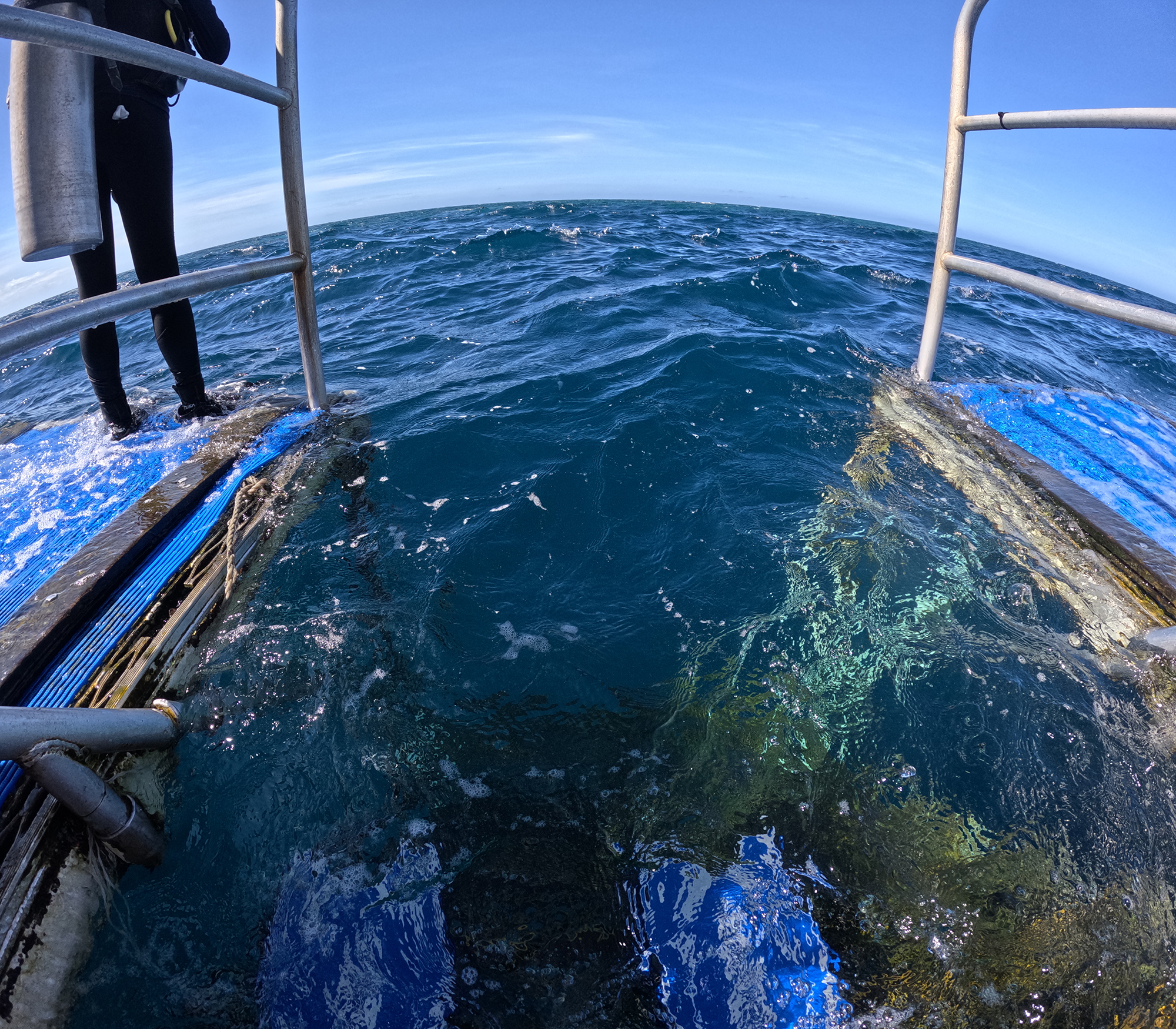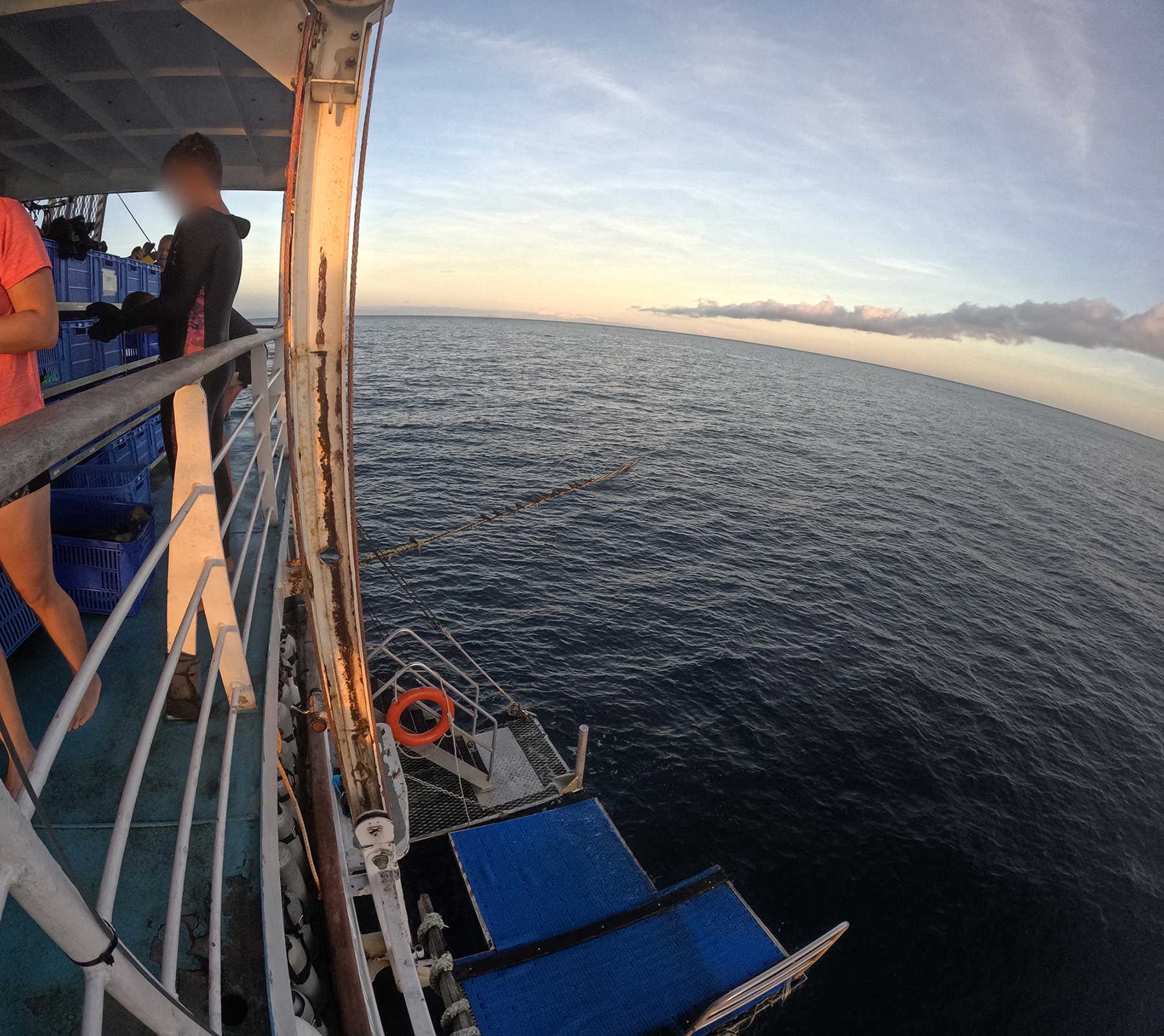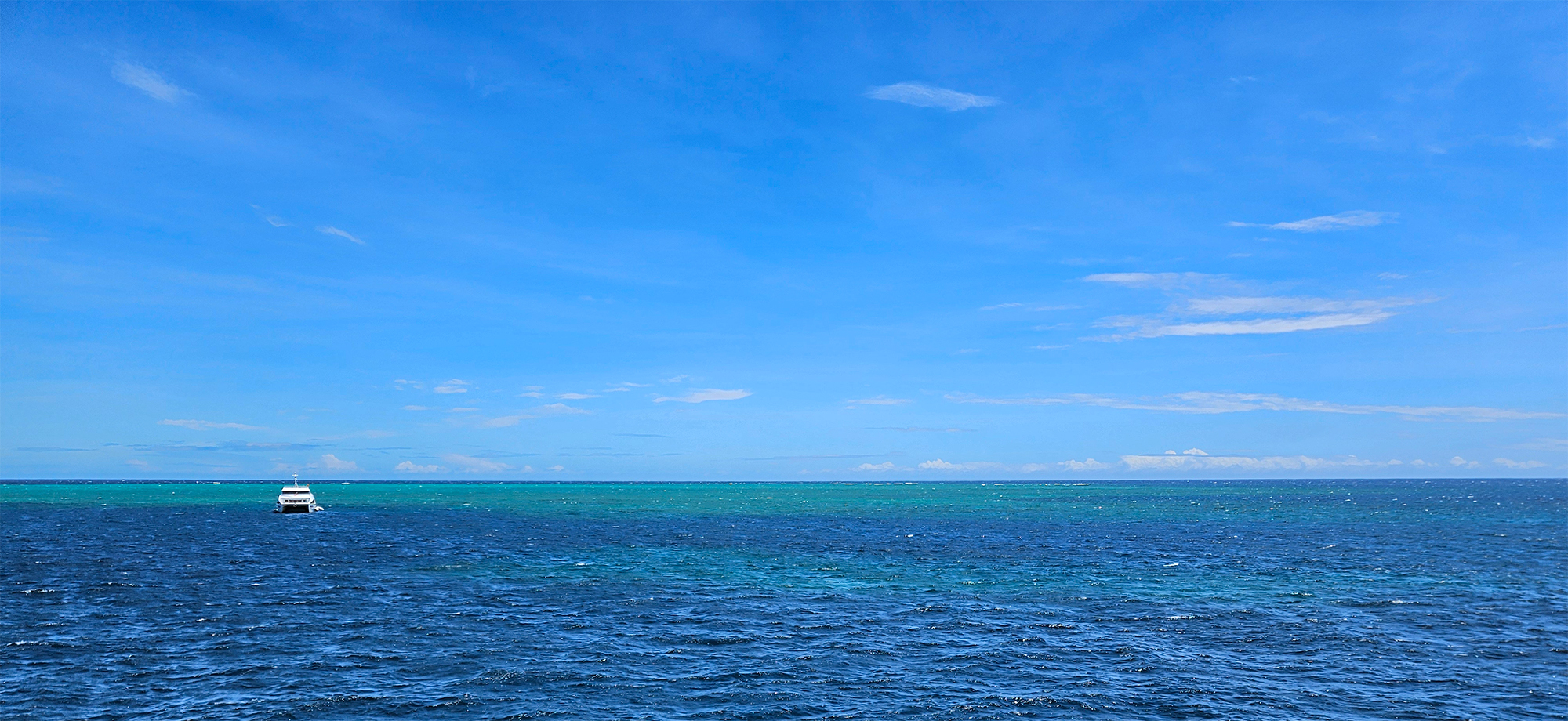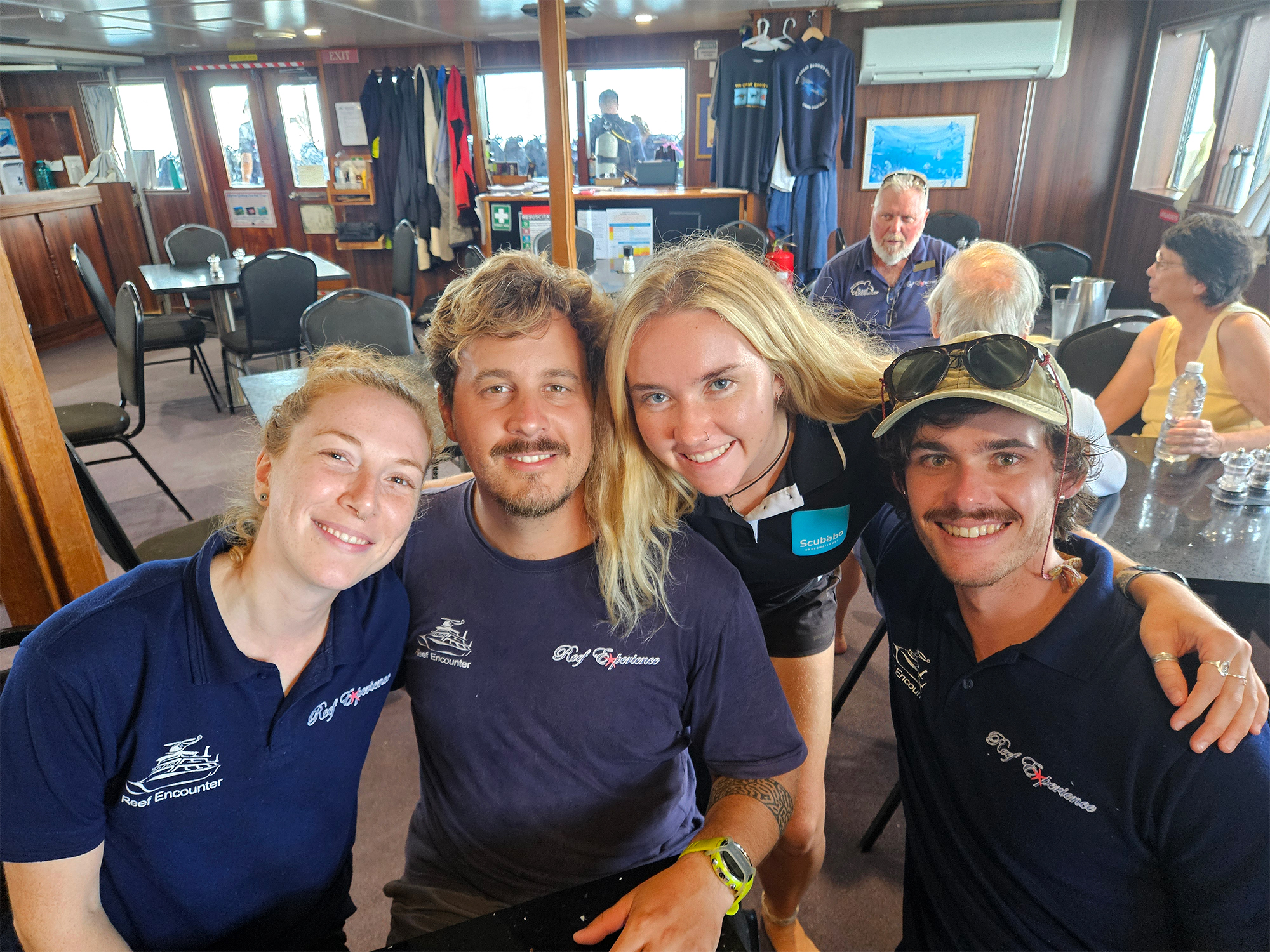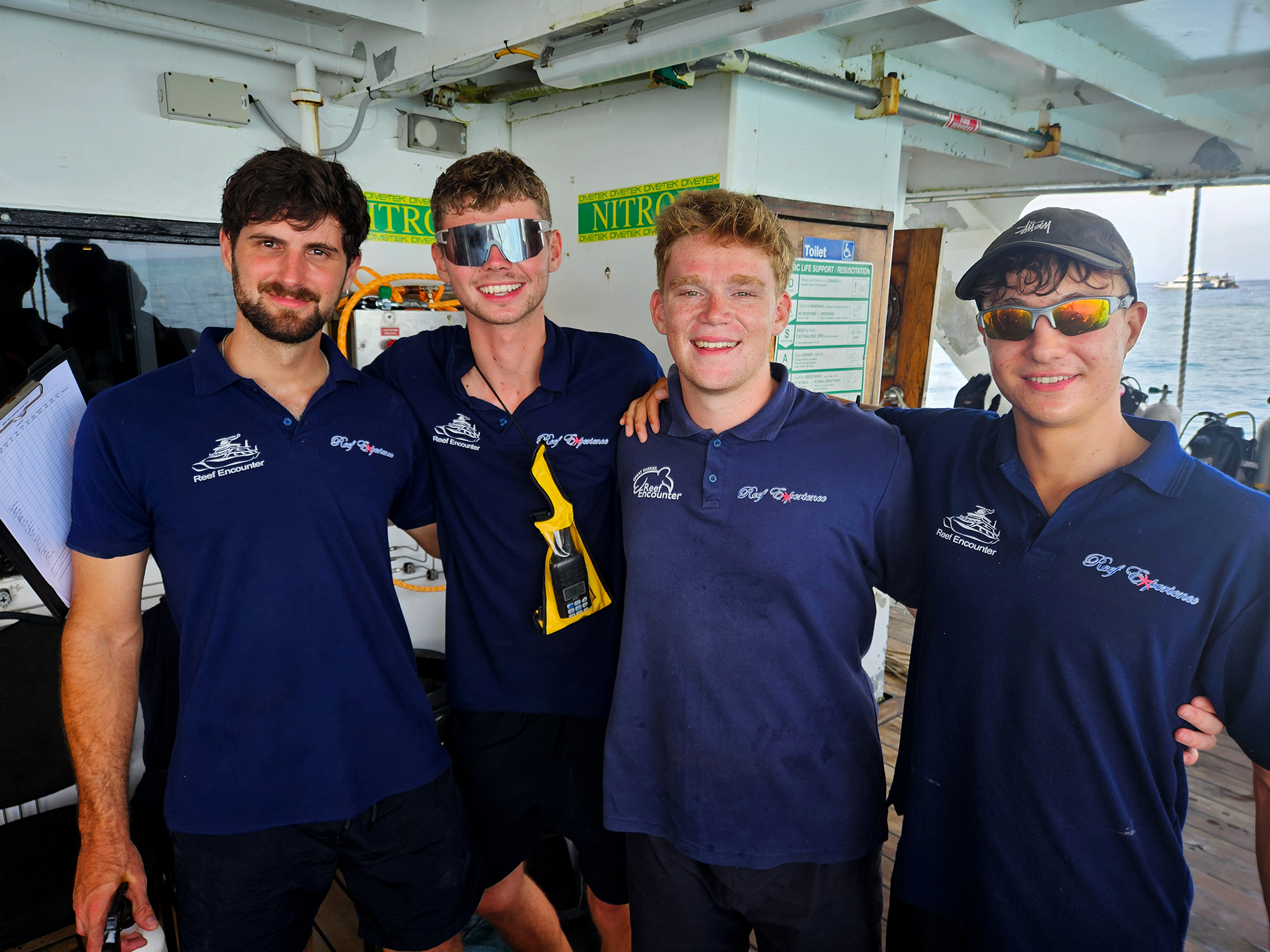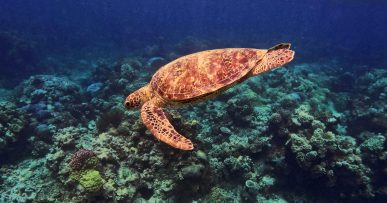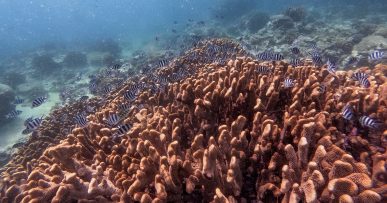- Snorkelling the Playground/Shark Mountain, Norman Reef
- Snorkelling Wildside Central, Norman Reef
- Snorkelling Norman Fingers, Norman Reef
- Snorkelling the outer Great Barrier Reef
Snorkelling the Outer Great Barrier Reef – Norman & Hastings Reefs
About Norman and Hastings Reefs
Norman Reef sits about 80 km offshore from Cairns, right on the continental shelf. Depths range between 10–20 metres, with plenty of shallow coral gardens near the surface. It’s the most northern reef commonly visited by tour operators.
Hastings Reef lies closer to Cairns at about 50 km out. Roughly 10 square kilometres in size and shaped like a horseshoe, it’s known for its shallow top – just 1–3 metres below the surface – making it especially good for snorkellers.
Both reefs are alive with coral gardens and marine life: staghorn and plate corals in white, purple, orange and pink; turtles and reef sharks; plus larger fish like maori wrasse, cod and groupers.
Getting There
We flew into Cairns, boarded a transfer vessel at 7.30 am, and travelled two hours out to a liveaboard anchored on the outer reef.
The beauty of a liveaboard is convenience: five times a day you can step straight off the back deck into the reef. Snorkellers are watched over by staff (with whistles if you drift too far!) while divers can also opt for night dives.
Stepping off the liveaboard.
Our Tour Operator – Reef Encounter
We chose Reef Encounter, one of a handful of liveaboard operators. Their program treats snorkellers and divers equally, which was important to us.
The staff were exceptional – relaxed, friendly and professional. Unfortunately, our trip coincided with the tail end of two cyclones. This meant rough seas, limited safe moorings, and some areas we couldn’t access.
Reef Encounter catamaran on the outer reef.
We also learned that many tourist operators lease reef moorings for 99 years. Seeing how many boats were out daily was sobering – a reminder of the pressure tourism places on the reef.
Staying on the Liveaboard
We stayed on the Reef Encounter liveaboard for five nights (in hindsight, four would have been enough). Weather conditions meant we spent most of our time at Wildside Central on Norman Reef, with shorter visits to Fingers and Playgrounds/Shark Mountain on Norman Reef, plus Blue Lagoon on Hastings Reef.
Wildside Central is better for divers than snorkellers. The shallow coral was mostly dead — a sobering reminder of cyclone damage and climate change. It sparked many conversations onboard about whether Australia is doing enough to protect this ecosystem.
That said, the Reef Encounter team went out of their way to ensure everyone enjoyed themselves.
Left: Lou, Santiago, Joce and Ian. Right: Nacho, Morty, Joe and Finn.
Snorkelling Norman and Hastings Reefs
These are the snorkel sites we visited:
- Norman Reef – Wildside Central
- Norman Reef – Fingers
- Norman Reef – Playgrounds/Shark Mountain
- Hastings Reef – Blue Lagoon
Of these, Playgrounds/Shark Mountain was our clear favourite, followed by Fingers, then Wildside Central. Hastings’ Blue Lagoon was sheltered but showed cyclone damage too.
Our Recommendation
Even with rough weather and visible coral damage, snorkelling the outer Great Barrier Reef was unforgettable. Swimming alongside turtles, wrasse and colourful coral gardens still felt special.
-
Best site: Playgrounds/Shark Mountain (Norman Reef)
-
Overall snorkel rating: ⭐⭐⭐⭐☆ (4 out of 5)
A liveaboard is the best way to make the most of your time on the reef. Conditions vary and the impact of climate change is obvious, but it remains one of the world’s great natural wonders – and worth experiencing for yourself.
But check out those links above for more info.


